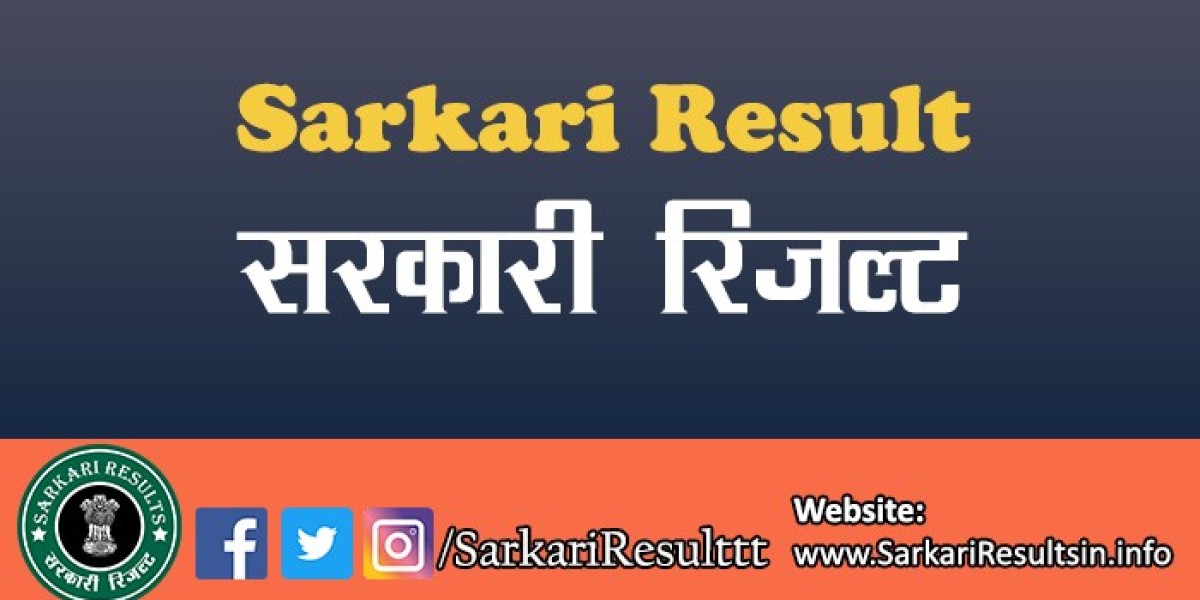In the realm of government job aspirants in India, the term "Sarkari Result" holds immense significance. It represents the culmination of months, if not years, of hard work, preparation, and anticipation. But beyond the euphoria of seeing one's name on the merit list lies a complex and often misunderstood selection process. In this article, we will delve into the intricacies of Sarkari results, decoding the selection process, and understanding the nuances of merit lists.
Understanding the Selection Process
The selection process for Sarkari exams is a multi-faceted journey that evaluates candidates on various parameters to ensure meritocracy and efficiency in recruitment. While the specific steps may vary depending on the conducting authority and the nature of the examination, the fundamental components typically include:
Preliminary Examination: Many Sarkari exams commence with a preliminary examination, designed to shortlist candidates for the subsequent stages based on their performance. This phase usually consists of multiple-choice questions (MCQs) covering a broad range of subjects.
Main Examination: Candidates who clear the preliminary examination advance to the main examination, which is more comprehensive and in-depth. The main examination assesses candidates' knowledge, analytical abilities, and domain expertise through a combination of MCQs, descriptive questions, and sometimes, practical assessments.
Interview or Personality Test: Certain Sarkari exams, especially those for prestigious posts such as civil services, include a personal interview or personality test. This stage aims to evaluate candidates' communication skills, personality traits, and suitability for the role through face-to-face interactions with a panel of experts.
Document Verification: Once a candidate clears all stages of the examination, they are required to undergo document verification to authenticate their educational qualifications, age, caste/category, and other relevant credentials. Failure to provide authentic documents can lead to disqualification.
Deciphering Merit Lists
Merit lists play a pivotal role in Sarkari results, as they determine the candidates who have secured the highest rankings and are thus eligible for appointment to the respective positions. Understanding the composition and interpretation of merit lists is crucial for aspirants awaiting their Sarkari results. Here's what you need to know:
Ranking Criteria: Merit lists are prepared based on candidates' performance in the various stages of the examination, such as the preliminary exam, main exam, and interview (if applicable). The marks obtained by candidates in each stage are aggregated to determine their overall ranking.
Normalization Process: In exams conducted in multiple sessions or phases, normalization is often employed to equate the difficulty level across different sets of question papers. This ensures fairness in assessing candidates' performance and prevents any advantage or disadvantage due to the variation in question difficulty.
Category-wise Merit: To uphold the principles of equality and social justice, separate merit lists are often prepared for different categories of candidates, such as General, OBC (Other Backward Classes), SC (Scheduled Castes), ST (Scheduled Tribes), and EWS (Economically Weaker Sections). Candidates are ranked within their respective categories based on their performance.
Tie-Breaking Criteria: In cases where two or more candidates secure the same total marks, tie-breaking criteria are applied to determine their ranking. This may involve considering the candidate's age (preference given to the older candidate), marks obtained in specific sections of the exam, or other predetermined factors.
Waitlists: In some Sarkari exams, especially those with a large number of vacancies, waitlists are maintained to fill any vacant positions that may arise due to candidates declining offers or failing to meet the eligibility criteria during document verification. Waitlisted candidates may be offered the position based on their ranking in the merit list.
Post-Result Procedures
Once the Sarkari results are declared and merit lists are published, successful candidates enter the final phase of the recruitment process, which typically involves:
Issuance of Appointment Letters: Successful candidates receive formal appointment letters or provisional allotment documents from the respective recruiting organizations, specifying the terms and conditions of their employment, including the posting location, salary, benefits, and probationary period.
Joining Formalities: Candidates are required to complete various joining formalities, such as medical examinations, police verification, and submission of additional documents as per the organization's requirements. This is essential to finalize their appointment and ensure compliance with regulatory norms.
Training Programs: Many government organizations conduct induction or training programs for newly appointed candidates to acquaint them with the organization's policies, procedures, and job responsibilities. These training programs are designed to facilitate the smooth transition of candidates into their roles.
Probationary Period: Newly appointed candidates are often placed on probation for a specified duration, during which their performance and conduct are closely monitored. Successful completion of the probationary period is a prerequisite for confirmation of employment.
Conclusion
Sarkari results signify the culmination of a rigorous selection process aimed at identifying the most deserving candidates for government positions. By understanding the intricacies of the selection process and merit lists, aspirants can navigate the journey with clarity and confidence. Beyond the euphoria of seeing their names on the merit list lies the promise of a fulfilling career in the public sector, where dedication, integrity, and service to the nation are paramount. So, embrace the journey, persevere through the challenges, and let your Sarkari result be the beginning of a rewarding professional odyssey.



